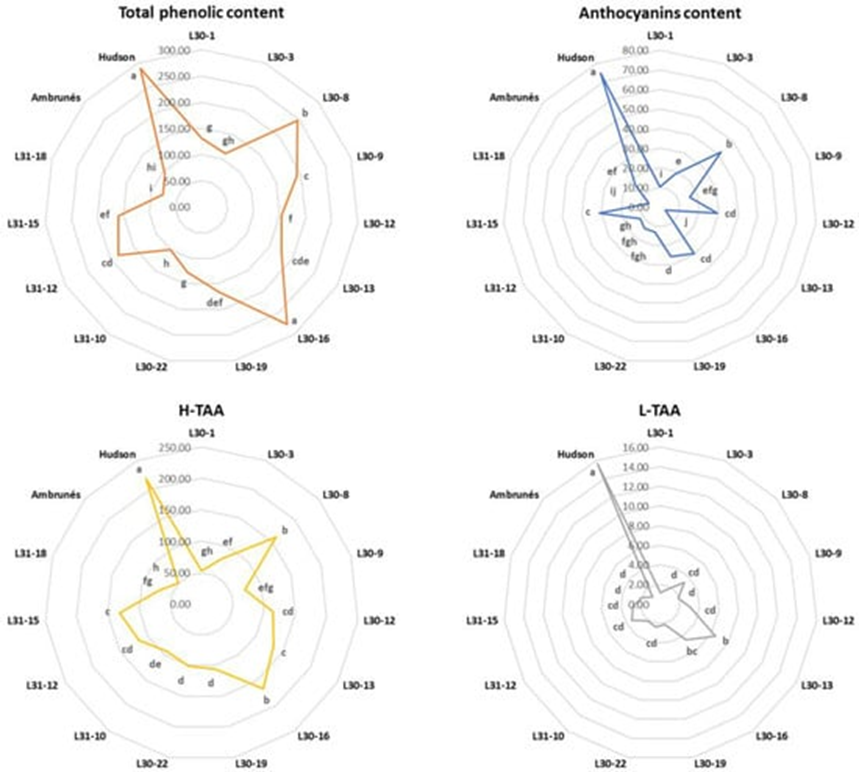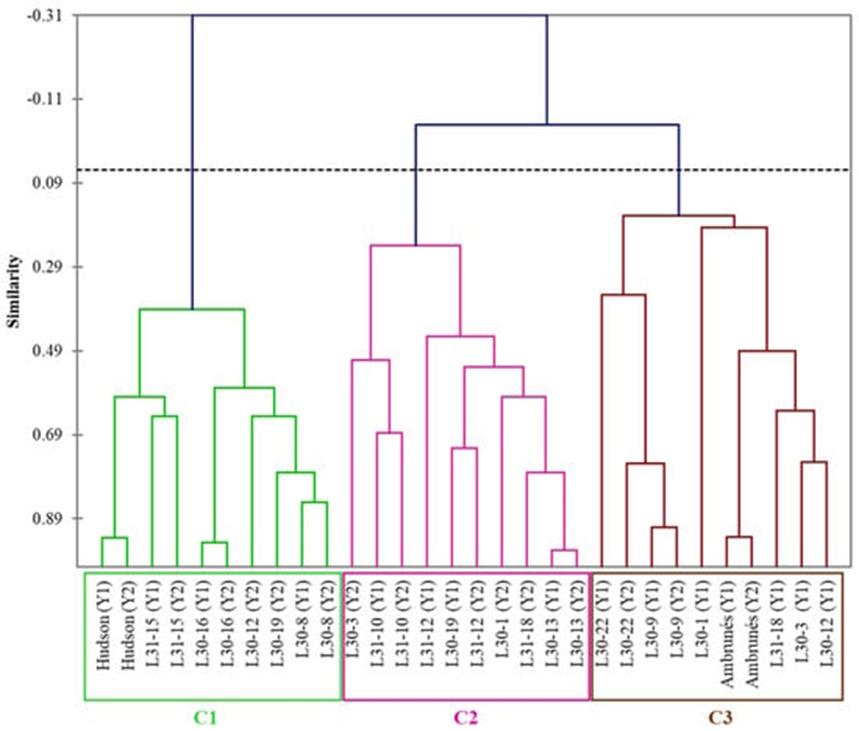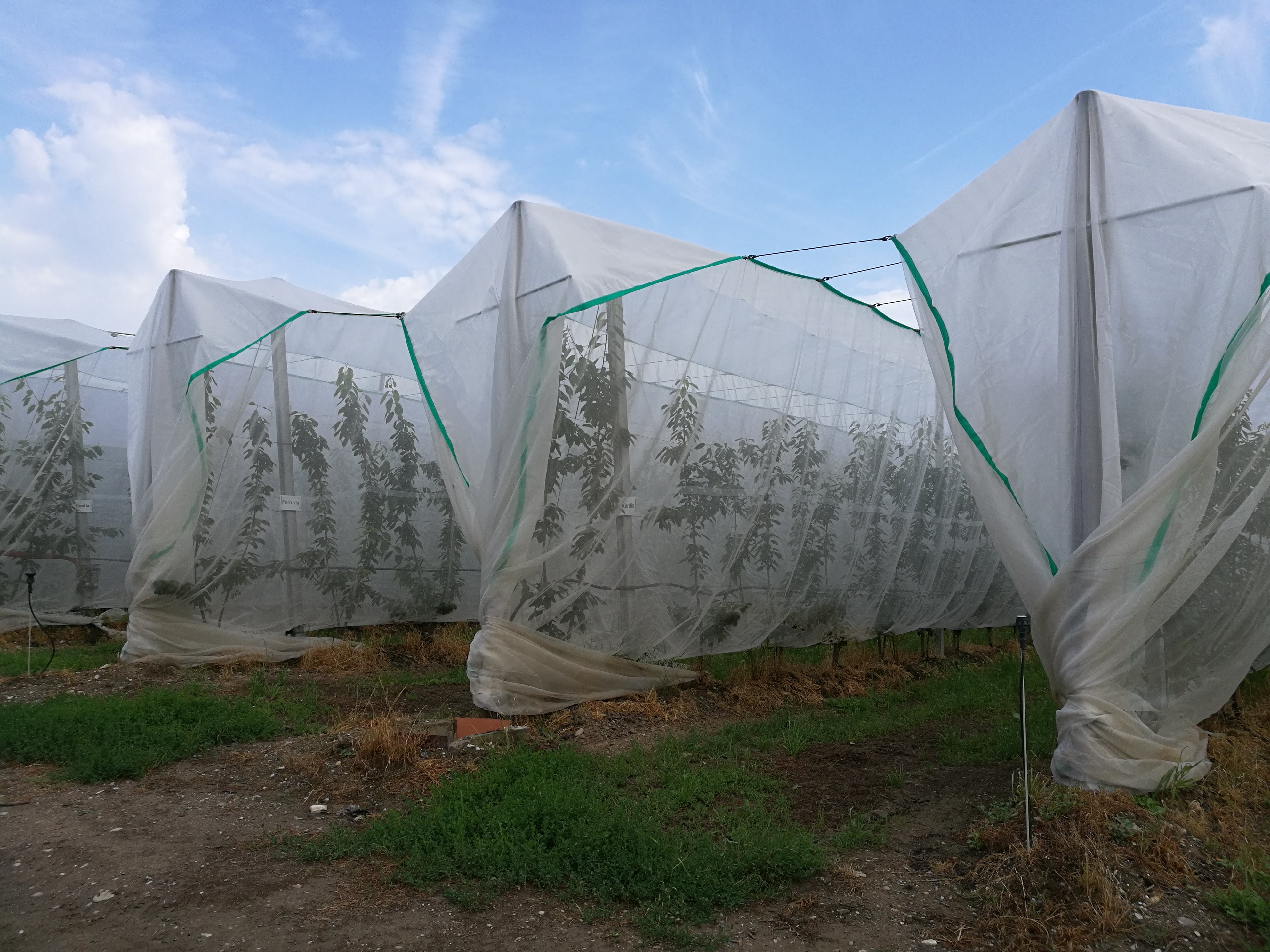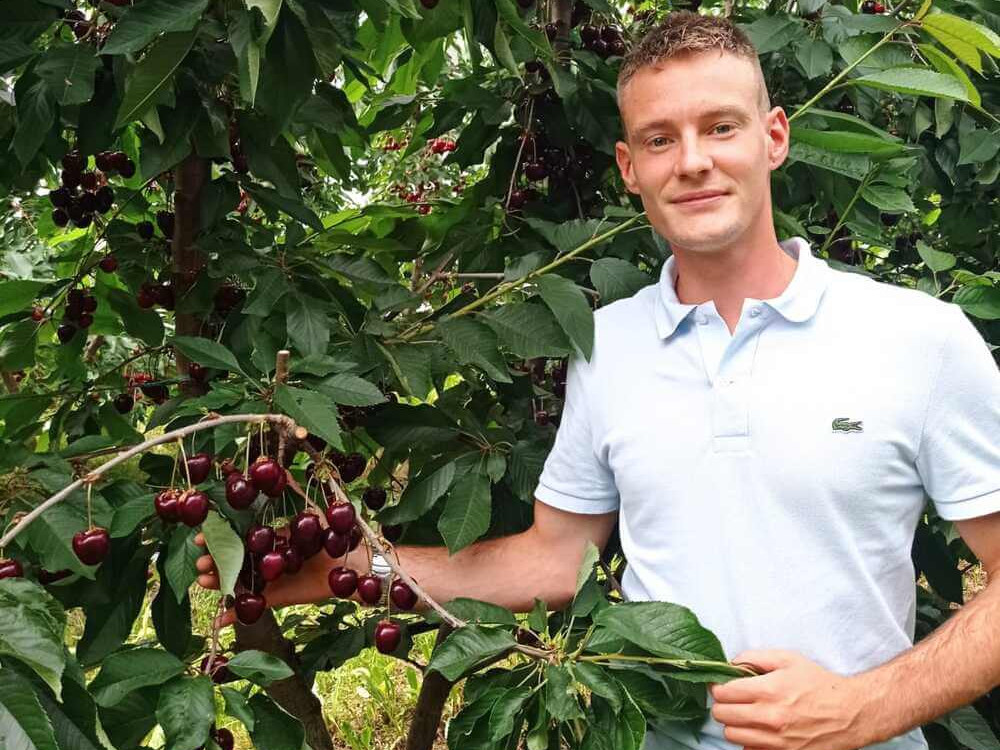Despite the exceptional bioactive profile of cherries, the implementation of breeding programs is a valuable tool for further improving it.
The Jerte Valley, located in the northern region of Extremadura, Spain, is renowned for its production of sweet 'Picota' cherries. These cherries stand out for being harvested without the pedicel and are marketed under the protected designation of origin (PDO) 'Cereza del Jerte'.
Picota cultivars and their characteristics
The PDO includes four cultivars of the 'Picota' type, namely 'Ambrunés,' 'Pico Limón Negro,' 'Pico Negro,' and 'Pico Colorado'. The 'Ambrunés' cultivar is the most significant in terms of production volumes.

Image 1. Radar chart of the average concentration of total phenolic content (orange), anthocyanins content (blue), hydrophilic antioxidant activity (yellow), and lipophilic antioxidant activity (grey) of the new and parental cultivars. Values are shown as the mean of the two years. Different lowercase letters in each plot indicate significant differences.
These 'Picota' cherries are highly appreciated by consumers for their exceptional organoleptic quality, characterized by a taste that combines high sugar content with a slight acidity.
The downside is that this cultivar has a low concentration of antioxidants due to its mahogany-colored exterior and orange interior.
Breeding program in the Jerte Valley
This is why the Extremadura Scientific and Technological Research Center (CICYTEX) established a breeding program in 2006 in the Jerte Valley.
The goal was to produce new 'Picota' cultivars with a superior antioxidant composition through the controlled crossbreeding of 'Ambrunés' × 'Hudson'.
The parental 'Ambrunés' is a medium-sized cherry with late ripening, while 'Hudson' is characterized by large fruits with a deep red color and also late ripening.
Study on phenolic and antioxidant compounds
The study focused on analyzing the phenolic and antioxidant compounds of thirteen cultivars resulting from the above-mentioned cross. The results showed that the total phenolic content was higher than in 'Ambrunés' in eleven out of thirteen cultivars, and the anthocyanin content followed a similar trend.
In this case, the anthocyanin content increased at a slower rate, and five cultivars did not surpass the levels of 'Ambrunés'. Unfortunately, none of the tested cultivars showed values comparable to 'Hudson,' which had the highest anthocyanin content.

Image 2. Dendrogram obtained after the application of hierarchical cluster analysis. Y1 and Y2 represent year 1 and year 2; C1, C2, and C3 indicate clusters 1, 2, and 3, respectively.
Hierarchical analysis and cultivar grouping
Using the quality data collected, a hierarchical analysis was conducted to group the varieties into homogeneous groups. The 15 cultivars under study were grouped into 3 clusters. The most distinctive cluster is C1, which contains the 'Hudson' parental.
C2 and C3 stem from the same branch of the dendrogram, suggesting they share a higher degree of similarity and a greater degree of dissimilarity from C1. The 'Ambrunés' parental is found in C3, while C2 is composed solely of new cherry cultivars.
Results and potential future applications
As a result, the new cultivars were divided into two groups: those that achieved the breeding program's goal and improved their bioactive characteristics (C1), and those that failed to reach this goal.
Within the second group, there is a subgroup that is almost identical to the 'Ambrunés' parental (C3) and a subgroup with characteristics distinct from both parental cultivars (C2). It is essential to recognize that only three of the five new cultivars (excluding 'Hudson') are present in both years in the C1 group.
Therefore, these three cultivars (L31-15, L30-16, and L30-8) could be considered similar to the 'Hudson' parental. As a result, these new cultivars have the potential to be further studied and could serve as parental cultivars in future breeding attempts.
Source: Palomino-Vasco, M.; López-Corrales, M.; Bañuls, P.; Bernalte, M.J.; Martín, A.; Serradilla, M.J. Screening of Physicochemical and Bioactive Traits of New Cherry Cultivars Obtained from the Cross of ‘Ambrunés’ × ‘Hudson’. Agriculture 2024, 14, 1938. https://doi.org/10.3390/agriculture14111938
Melissa Venturi
University of Bologna (IT)
Cherry Times - All rights reserved














